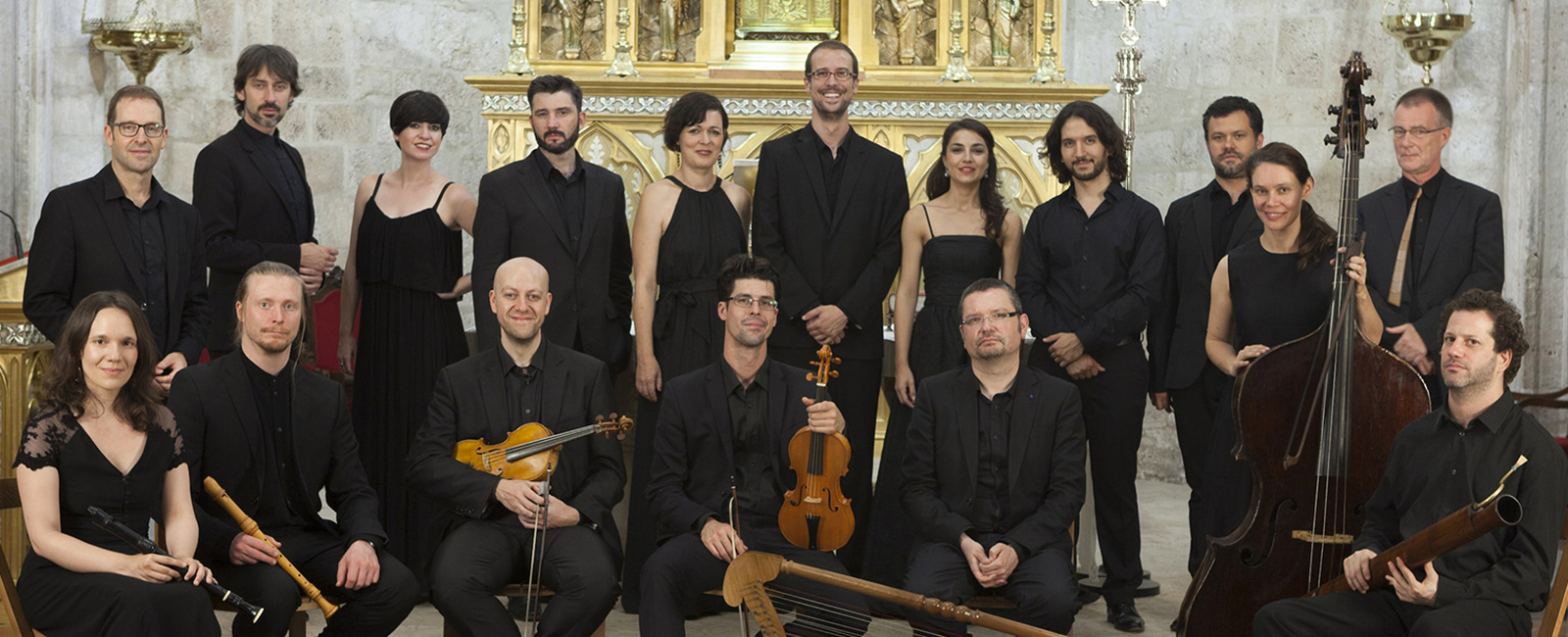‘Ruimonte in Brussels’, a project that recovers the original sounds of a major composer from the Spanish Golden Age
The Spanish Golden Age is associated with creative splendor in painting and literature. But there is less knowledge about the scope of music, where major composers still remain in the shadows. ‘Imagine that in painting you only knew about Velázquez or El Greco, and that someone told us about paintings that have not been exhibited of a Francisco de Zurbarán, an artist called Claudio Coello, an Alonso Cano…’ explains Albert Recasens, a musicologist and expert in the recovery of historical music, and conductor of La Grande Chapelle.
3 February, 2017
Recasens has spent the last year investigating original sources in Antwerp, Paris, Regensburg, London, etc. to reconstruct for the first time the music that was played for Archduke Alberto and Archduchess Isabel. Among the composers was the maestro Pedro Ruimonte (1565-1627), who was active in Coudenberg Palace in the first fifteen years of the 17th century. The result of this research, carried out with the support of the 2016 Leonardo Grants program for Researchers and Cultural Creators, was presented on February 3 at a special concert in the church of San Jerónimo El Real, in Madrid.
Why is reconstruction necessary? ‘Music in this period is written out in white mensural notation and in separate parts, not in full scores, so it requires a musical transcription to convert it into modern notation. It’s mainly vocal music without any indication of the instruments that may accompany it. This forces us to use iconography, accounting books, correspondence, treaties and other sources to study what the groups of musicians in the chapel or chamber were, and deduce what the type of accompaniment there was in each case,’ explains Albert Recasens. ‘The vocal lines give us the skeleton; historical research allows us to flesh it out, providing the sonority that the composer was aiming for.’
Albert Recasens cites the similar case of restoring paintings, which ‘returns to the painting the original tones, which have been darkened by the passage of time and the problems of conservation; sometimes figures may even appear that have been hidden beneath a later layer. In music we also try to rescue the original sounds and recover the spirit that gave it life. We do that with the use of scientific tools.’
Ruimonte, an innovator of his time
The project carried out by Recasens has brought to life some interesting information: ‘Pedro Ruimonte is an innovator who composed madrigals (profane pieces interpreted a cappella, that deal with topics such as love, hope and the passage of time), a genre that was barely performed in Spain. Ruimonte explores all the expressive capacities of the text. He takes a word or a special phrase and paints a “musical picture,” describes it using a variety of techniques. As with the case of his Italian contemporaries, he puts music to the service of the words.
This expressive style contrasts with his villancicos (carols), a literary-musical form in Spanish of a sacred nature, but far removed from the popular idea of carols we know today. They also formed part of his collection Parnaso español (1614), which demonstrates a greater interest for thematic and rhythmic development. My interest in interpretative practice has been a constant throughout the study: there is little evidence of how the carols were performed, for example, and particularly in Brussels, but I’ve adopted the practcie of the Spanish Capilla Real, where plucked string instruments and viols were used. I’ve opted to use a single singer per part, which allows the text to be inflected and understood better; in the case of sacred works with two choirs (Philips and Ruimonte), one of them is strengthened with ‘minstrels’ (cornet, sackbut, dulcian).
The concert presenting the project, with music by Ruimonte, but also by Philips, Cornet and Frescobaldi, reflected these new forms and the richness of contrasts of the music that emerged in Brussels. ‘The program combines the intimate nature of the madrigal, in Spanish, with the forceful nature of Latin motets, interpreted in eight voices by two choirs, which transmit the solemnity and power of the court; and together with the carols, we also offer exclusively instrumental music, in which there were huge developments at the hands of organists at the service of the archduke and archduchess.’
The rigorous recovery of the original sonority is reflected in the instruments used in the project, which are copies of existing Renaissance instruments: recorders, viols (Renaissance, not Baroque), two lutes (to complete the polyphonic texture), cornets, sackbuts (from which the modern trombones are derived) and the dulcian, an ancestor of the bassoon.
Thanks to the research carried out by Recasens the figure of Ruimonte can now be positioned in a much more precise context: ‘We have discovered a modern and avant-garde author, who assimilated the latest trends from the 17th-century Italy, such as the madrigal. Musically, he is at the level of Tomás Luis de Victoria and his production is key to understanding of the transition from Renaissance to Baroque. His two decades in Antwerp also gave him an international projection enjoyed by few Spanish composers, such as Victoria himself in Rome, or Cristóbal de Morales in the Vatican.
This expert highlights the importance of research in music: ‘The goal is to make the public aware of the sound dimension of the period of Brueghel and Rubens. As scientists we have the duty to be honest; as artists, to give life to the material we work with. No scientist would betray rigor in favor of popularity.’
The concert at the church of San Jerónimo el Real was a special occasion, as ‘it materialized the transfer of knowledge to the public. Programmers do not always have the sensitivity to allow new findings in musicology to reach the public; but the project developed thanks to the Leonardo Grant to Researchers and Cultural Creators does,’ concludes Recasens.

